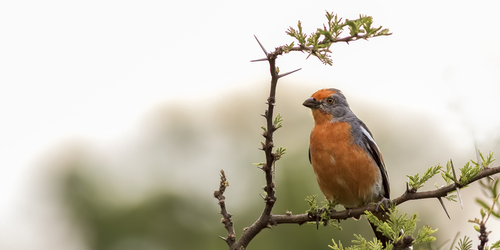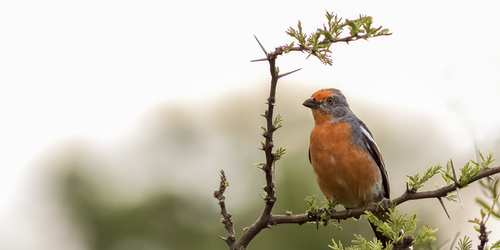Measuring Bird Size Using Song
There are two types of birds, as far as researchers who study birdsong are concerned: “vocal learners” that master their songs by copying other members of their species, and “nonlearners” that figure their songs out independently using both instinct and physical capability. Researchers who study the physics of birdsong want to understand whether the properties of a nonlearner’s songs depend on the bird’s physical characteristics, like body size. Now, Gabriel Mindlin of the University of Buenos Aires in Argentina and colleagues develop a model that could allow researchers to deduce from its cry the body size of the white-tipped plantcutter, a species of bird native to South America.
Most birds vocalize the same way that humans do, by moving air through their vocal folds. This moving air oscillates the folds, creating sound. Mindlin and colleagues propose that the white-tipped plantcutter instead presses its vocal folds shut so that air builds up behind them. When there’s enough pressure, the folds open suddenly with an explosive pulse of energy. That pulse then resonates inside the bird in what’s called its oroesophageal cavity. Their model shows that the frequency of the resulting birdcall depends on the fundamental frequency of the cavity, which is linked to its size. Thus, the team says, researchers may be able to determine a bird’s overall size from its song.
So far, the white-tipped plantcutter is the only species known to create birdsong using such sharp pulses of air. But Mindlin says that he expects that other species might use the same mechanism.
This research is published in Physical Review Letters.
–Erika K. Carlson
Erika K. Carlson is a Corresponding Editor for Physics based in Brooklyn, New York.





